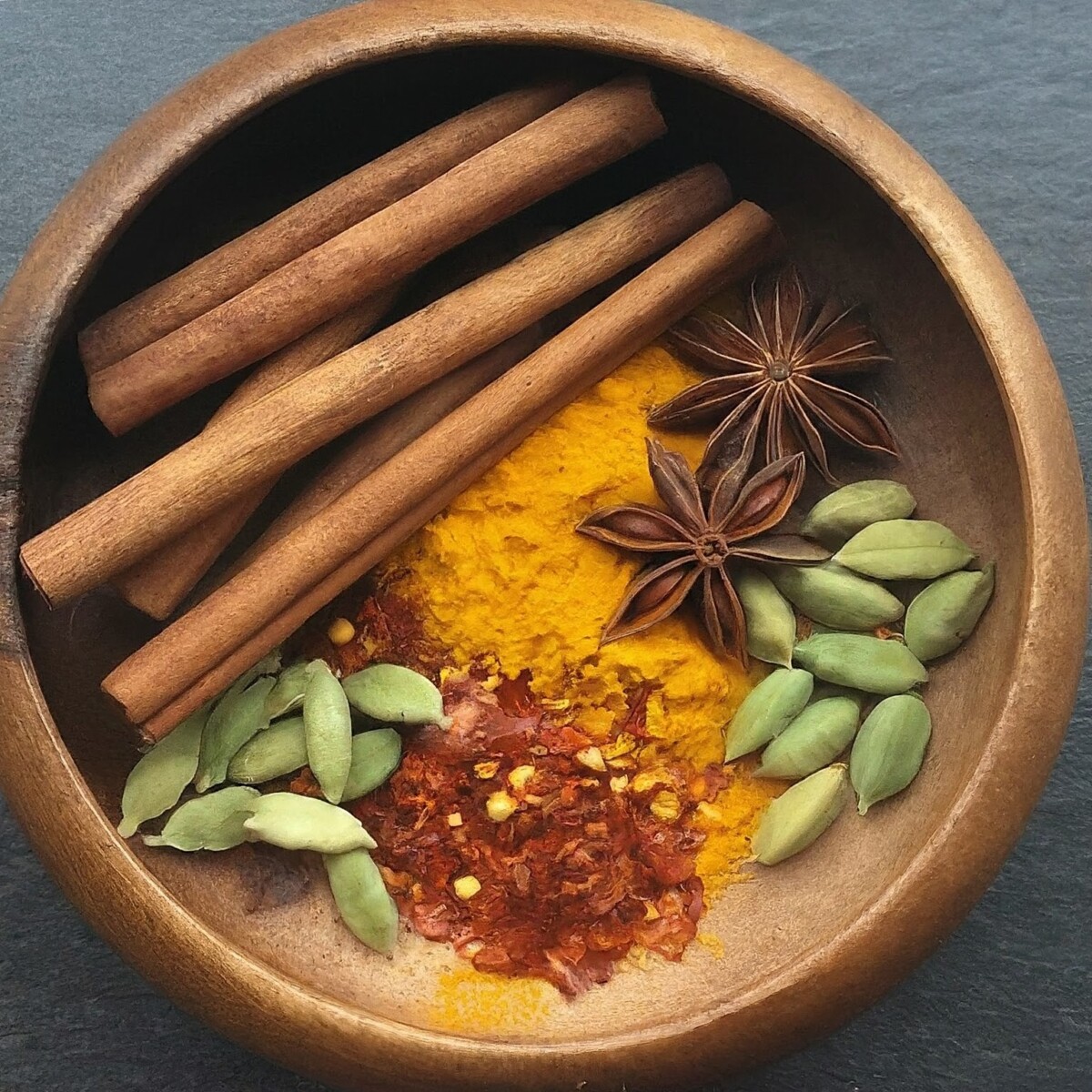For centuries, spices have been more than just culinary additions – they were prized commodities that fueled exploration, shaped cultures and transformed how we experience food. From the fiery heat of chilies to the warm embrace of cinnamon, spices add a symphony of flavor and aroma to our dishes, transporting us on a global culinary adventure with every bite. Let’s embark on a journey to explore some of the world’s most flavorful spices, uncovering their origins, unique characteristics, and how to incorporate them into your cooking.
The Spice Rack Hall of Famers
Our exploration begins with some of the most ubiquitous and well-loved spices in kitchens worldwide.
- Black Pepper: Still the “king of spices,” black pepper’s flavorful spices add a sharp, biting heat and depth of flavor to countless dishes. Native to India, black peppercorns are the dried, unripe fruit of the Piper nigrum vine. The most commonly used form is ground black pepper. Still, slow-cooked dishes can gradually use whole peppercorns to release their complex flavor.
- Cumin: This earthy, warm spice with a slightly bitter undertone is a cornerstone of Middle Eastern and Indian cuisine. The Cuminum cyminum plant produces cumin seeds, which people typically use whole or ground. Cumin adds a unique savory note to curries, stews, and spice rubs.
- Cinnamon: This fragrant spice, derived from the inner bark of several Cinnamomum tree species, offers a warm, sweet, and slightly woody aroma. Ground cinnamon is commonly used in baking and desserts. Contrastingly, simmer liquids with cinnamon sticks to infuse them with flavor.
- Garlic: A culinary powerhouse, garlic boasts a pungent, savory flavor that provides depth and complexity to various dishes. Although garlic is technically a bulb vegetable, its use aligns more closely with spices. Experiment with roasting garlic for a mellower flavor or mincing it fresh to unleash its full pungency.
- Ginger: This versatile root vegetable boasts a warm, slightly spicy aroma with a touch of sweetness. Ginger can be enjoyed fresh, grated, pickled, or ground. Fresh ginger adds a vibrant zing to stir-fries, marinades, and juices, while ground ginger is a common ingredient in curries and baked goods.
Also Read, Balinese Flavors at Home: Mastering the Craft of Homemade Condiments
Beyond the Basics: Unveiling Hidden Gems
Once you’ve mastered the classics, venture beyond the familiar to explore some lesser-known spices waiting to elevate your cooking:
- Sumac: This vibrant red spice, made from ground sumac berries, offers a tart, citrusy flavor with a hint of astringency. Sumac is a popular seasoning in Middle Eastern cuisine, adding a refreshing touch to grilled meats, salads, and dips.
- Cardamom: Native to South India and Sri Lanka, cardamom comes in two varieties – green and black. Green cardamom pods boast a bright, citrusy aroma with mint, while black cardamom offers a smoky, eucalyptus-like note. Cardamom is essential in Indian curries, Scandinavian pastries, and chai tea.
- Star Anise: This star-shaped spice, native to Southeast Asia, offers a sweet, licorice-like flavor with a hint of citrus. It is a signature ingredient in Chinese pho and Vietnamese broths, adding a unique twist to desserts and mulled wine.
- Turmeric: This vibrant yellow spice, prized for its earthy, slightly peppery flavor and potent anti-inflammatory properties, is a staple in Indian cuisine. Turmeric adds a beautiful golden hue to curries, rice dishes, and smoothies.
- Smoked Paprika: Regular paprika is a ground red pepper with a mild sweetness and a hint of smokiness. Smoked paprika takes it up with a deeper, richer flavor profile achieved through wood-smoking the peppers before grinding. Smoked paprika adds a touch of campfire magic to stews, dips, and deviled eggs.
Embarking on Your Spice Odyssey
Now that you’ve met some fascinating spices, it’s time to start incorporating them into your cooking. Here are some tips to ensure a successful spice odyssey:
- Start Slow: When unfamiliar with a spice, begin with a small amount and gradually increase to suit your taste preferences.
- Freshness Matters: Opt for whole spices whenever possible and grind them just before use for the most intense flavor. Pre-ground spices lose their potency over time.
- Embrace Experimentation: Be bold and experiment with different spice combinations. Create your signature spice blends to personalize your dishes.
- Consider Regional Cuisines: Research traditional spice combinations used in various cuisines to discover new flavor profiles.
- Explore Online Resources: A wealth of information is available online, from spices flavorful identification guides to detailed recipes showcasing the magic of different spices.
